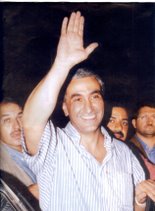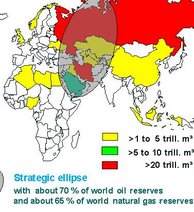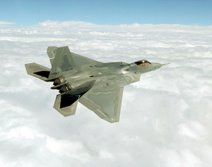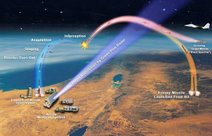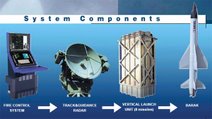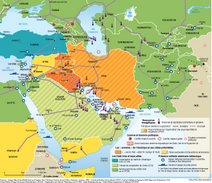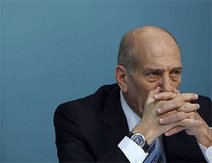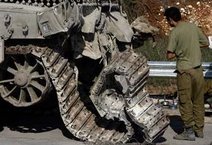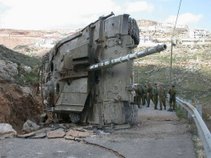
Address by Foreign Secretary at the Woodrow Wilson Centre on “Two Democracies - Defining the Essence of India-US Partnership”
15/03/2010
Mr. Lee Hamilton,
Thank you for your kind words of introduction.
It is a particular privilege to be at the Woodrow Wilson Centre – amidst the distinguished men and women who are here today – many of whom have put in years of dedicated work and study in subjects that are of immense relevance to the India–US discourse. I am grateful for your interest and will, I am sure, be enriched by your thoughts and views in the course of this afternoon meeting.
I also want to recognize the role of the USIBC and the Indian federations and associations of business and industry that have reached out and worked successfully with partners across the United States to build the economic linkages and the people to people bonds - that are the bedrock of the India US relationship.
Strong Fundamentals
It was President Woodrow Wilson who said “I believe in…democracy...because it releases the energies of every human being.” This is what democracies seek to do - in essence, to harness the energies, and enable the empowerment of all their citizens, regardless of colour or creed, ethnicity or economic status. Our two robust and vibrant democracies believe and act on the basis of such ideals. I am therefore, particularly enthused by the choice of theme for my address this afternoon. Particularly as we commence the second decade of this century, it is appropriate that we reflect on the essence and the potential of the unique partnership between two of the world’s greatest democracies - the oldest and the largest.
Geographically, India and America are separated by almost ten thousand miles. Yet, we are nevertheless connected in a very direct and obvious way by the kind of similarities that we share – our respect for fundamental democratic freedoms, our strong and enduring democratic institutions, the rule of law, our culture of debate and discussion, the stress on accountability and transparency in governance, our autonomous institutions that are constitutionally empowered to safeguard fundamental rights and our shared commitment to preserve the pluralistic and secular nature of our diverse and open societies. It was therefore no accident that the Constitution that India adopted in 1950 was also inspired in great measure by the ideals of freedom, equality and justice that formed the bedrock of the United States Constitution. Yet, for several decades after our independence, relations between our two democracies failed to realize their potential because of estrangements derived from the atmosphere of the Cold War and its manifestations in our region.
We have come a long way, however, in the last decade and a half. Today, as India has grown to be one of the leading economies of the world, and a responsible nuclear power, we are cooperating at the global level on a range of issues. Bilaterally, our ties have become truly broad-based. The conclusion of the India-US Civil Nuclear Agreement in 2008 marked a major definitive milestone in our relationship. That our ties are marked by both popular and political support was underlined in 2009 by the reaffirmation by our newly elected governments that they would encourage the further positive transformation of our strategic partnership for mutual benefit. In July 2009, we launched a Strategic Dialogue process that covers a number of areas of convergence under the five pillars of: Strategic Cooperation, Energy and Climate Change, Education and Development, Economics, Trade and Agriculture and Science, Technology, Health and Innovation. This is the sentiment that was expressed by President Obama when he told Prime Minister Manmohan Singh last year that “obstacles once thought insurmountable are now well-springs of new cooperation” and that ours is “one of the defining partnerships of the 21st century”.
The strong support in both countries for a robust bilateral relationship is, to quote our Prime Minister, based on both principle and pragmatism. Not only are we natural partners in addressing strategic issues of regional or global concern but there are very direct linkages on a day to day basis : the US is our largest trade partner – if we count goods and services – with a total bilateral trade of USD 65.9 billion last year; the United States is one of the leading sources of Foreign Direct Investment into India and recently, many US companies have announced major expansion plans in India. US businesses have increased their competitive advantages and innovation drive through their operations in India. Indian investment flows to the US were estimated at US $ 13 billion in 2007 and continue to steadily increase. Statistics show that 70% of urban Indians believe relations between India and the US have improved in recent years, and of them, 91% consider this to be a good thing.
Ladies and Gentlemen, it is these fundamentals that are the essence of the partnership between our democracies.
Priorities and Convergences
And there is another key contributing factor today : the foreign policy priorities of the United States and India seem to converge now as never before – and both Governments recognize the validity of their cooperation in helping to craft solutions to the foremost challenges of our times– the threat of terrorism as it affects both our nations, the dangers of religious extremism, promoting development in Afghanistan, the global financial and economic crisis that has given new content and meaning to the work of forums like the G-20, the common challenges of addressing the impact of global climate change or disaster relief , pandemics or piracy at sea : our partnership has increasing relevance and meaning.
Challenges and Opportunities
These convergences create the global strategic partnership in which India and the USA have launched a new phase of cooperation across a broad spectrum of human endeavor - based on our common ideals and complementary strengths - to address the global challenges of the 21st century. And in India, the United States must see an anchor for stability in our region, a nation that is wedded to the principles of responsible behaviour and mature restraint, is a powerful and rapidly growing economy, and that can, as one analyst noted recently, be “potentially America’s most important partner in Asia”. Our Prime Minister sees the India-US relationship as an “essay in mutual comprehension”.
Today, the challenge is how we take our economic and political partnerships to a higher level of achievement and provide as it has been said, “more passion” to energize our relationship further. What are the constraints to our relationship? Often the question influential opinion makers in India ask is has the United States sufficiently visualized the importance of its relationship with India, and freeing it of the hyphenations that have somehow tied it down, and stunted its normal growth.
Why India? Today, when the world, and the United States look at our region, they are witness to the rise of India as a democratic nation with proven abilities to manage diverse developmental challenges within its territorial borders, that has increasing ability to promote economic development beyond its borders in its neighbouring countries and farther afield, in Africa, whose skills in the knowledge economy place it in the front ranks of global excellence, is an acknowledged nuclear power with a record of responsible behaviour and adherence to MTCR and NSG guidelines, and whose rapid economic growth place it in the trajectory of becoming the third largest economy in the world.
Our economic performance against the backdrop of the international economic and financial crisis serves as a useful illustration of the discipline and prudence with which India has managed its financial and economic policies. India’s growth in the four years preceding the onset of the global financial crisis was around 9%. In late 2008, India’s growth slowed down to 6.7% but recovered to a level of 7.2% in the last financial year. Projections indicate 8.2 % in the next financial year and in the next 4-5 years we anticipate a return to 9% based on a revival in exports, manufacturing, infrastructure investment and private consumption demand along with a favourable capital market. In a knowledge- and technology-driven world, India has demonstrated certain unique strengths – our IT exports for the current year are poised to touch the $50 billion figure; India currently exports generic medicines worth USD 11 billion; our leading steel companies have posted double digit growth in sales volume; the December 2009 index of industrial production surged month-on-month by a record 16.8%. Cumulative industrial growth is pegged at around 9%. The most noticeable feature of India’s economic growth is that it is driven primarily by domestic demand. In the recent budget, 46 percent of the total Plan allocation was earmarked for infrastructure development – which implies significant business and investment opportunities. Our youthful demography with a projected average age of 29 years in 2020, will drive economic expansion in our country, particularly the expansion of our urban sector well into the second half of this century.
To achieve an external environment that promotes the fulfillment of our economic growth, targets and ambitions, we have identified three key pre-requisites– capital inflows, access to technology and innovation, as well as the promotion of a free, fair and open world trading system. Central to these tasks is a world order that helps the promotion of our development interests. And here again, the partnership between India and the United States can provide a creative impulse and momentum that builds a global environment that is conducive to the realization of these goals. Turning to India’s immediate neighbourhood, I believe that there should be deeper awareness and understanding of India’s objective to work for stability and peace in its neighbourhood. Just as the tackling of terrorism is a policy priority of the US Administration, India, too, is concerned at the terror infrastructure that has been allowed to be established, take root and be used as an instrument of state policy in our immediate neighbourhood. Our heartland, our cities and our people, are exposed to the threat of terrorism in a constant and almost unremitting way in a manner that the United States well understands, given the similar threats that are directed against the American people.
Defining restraint
India’s approach has been to deal with this challenge with restraint. Despite the brazen and malignant nature of the threats we face, India has made several genuine efforts to restore trust and confidence. Aggressive pronouncements by persons identified by the world as terrorists continue to be made openly against India. Distinctions made between the various terrorist outfits are now meaningless, since they are now in effect fused both operationally and ideologically. We have consistently emphasized the need for Governments concerned to act decisively to dismantle the infrastructure of terrorism and to effectively deal with groups that perpetrate it. However, our restraint should not be confused with weakness or unwillingness to act against those that seek to harm our people, create insecurity, and hamper our developmental goals. We are a strong country and we possess the capacity to deal effectively with those that pursue destructive agendas against India and its people.
We have, time and again, made genuine attempts to address outstanding issues, most importantly, the issue of terrorism through dialogue with Pakistan. My meeting with my Pakistan counterpart represented the latest such move. Despite the provocations we have faced constantly from terrorists whose linkages we have traced back to Pakistani soil, we have not abandoned the path of dialogue. And in our recent meeting, India’s approach was to focus on our concerns regarding terrorism, pending humanitarian issues, and some bilateral visits that have been planned or spoken of, but have not taken place. But it continues to be our conviction that for this dialogue to really make progress, Pakistan should take meaningful steps to address our concerns on terrorism, and cease the encouragement of terrorism targeted against India. In January 2004, the then Pakistani leadership had made such an assurance on the basis of which we resumed our Composite Dialogue to discuss various outstanding issues in our relationship. Today, Pakistan claims that it is in no position to give us such a guarantee that terrorism can be controlled by its authorities. In such a situation, the people of India who are already bitterly affected by the series of terrorist attacks directed against them, can hardly be expected to support the resumption of a full-blown Composite Dialogue with Pakistan. It is also important that there are strict accountability criteria that apply to defence assistance rendered to Pakistan for operations against terrorists and insurgents on the border with Afghanistan. Our past experience regarding such assistance has taught us to be vigilant to the possibility of it being used for purposes that generate tension and hostile actions against India. We do not have aggressive designs against Pakistan and we want it to be a stable and prosperous country. But we will be vigilant about our security. That is our sovereign right.
The deteriorating situation in Afghanistan is one of the foremost security related challenges faced by our region. We feel that it is vital for the international community to stay the course in Afghanistan. India has, at the request of that country, worked on infrastructure creation, and capacity building in key developmental sectors, with a total investment of 1.3 billion US dollars across several provinces and in very difficult terrain. Our assistance is provided in a transparent and fully accountable manner, and has underscored our commitment to Afghan democracy and inclusive development. At the recent London Conference, we have announced new initiatives in the agriculture sector and in institutional capacity building. In all these areas we have responded to the felt needs of the Afghan people.
We believe it is imperative for the international community, in its new initiatives on security, reintegration, and reconciliation in Afghanistan, to approach these issues carefully – and with caution. We believe that any reintegration process should include only those who abjure violence, give up armed struggle and terrorism and are willing to abide by the values of democracy, pluralism and human rights. There is every risk, otherwise, that the Taliban could resurrect themselves as they have done in the past even when we think they have been defeated or we are rid of their hardcore elements.
The barbaric attack against Indians engaged in humanitarian and development work in Afghanistan on February 26 was an attack by those who do not wish any other future for that country except one that suits their sinister ambitions. The international community should understand that such attempts, if unchecked, will only embolden the same forces that held sway in Afghanistan in the 1990s and caused the tragedy of 9/11. One cannot stress enough the need to avoid compromises or differentiation between the so-called shades and hues of the Taliban. That would be disastrous for Afghanistan and for the world. In short, there is no quick solution to the Af-Pak situation. It is important for the international community, in its own interest, to stay the present course for as long as it is necessary.
New areas of partnership
Speaking in Washington last November, Prime Minister Dr. Manmohan Singh said “our relationship will see a new emphasis on five Es - economy, energy, environment, education and empowerment – even as we further strengthen our ties in defence, security and counter-terrorism. We will also harness our natural synergies in science and technology, education and research to advance food security, improve healthcare, develop green technologies and create the human resources for the future”.
Both our Governments are agreed that the India US partnership is important for addressing the challenges of an increasingly interdependent world – our cooperation could cover different fields - for example, the critical area of agriculture and food security, especially with regard to Africa. This Indo-US cooperation is envisaged by us as a net additionality over and above what India is doing bilaterally with Africa. One possibility is the mechanism of ‘triangular cooperation’ where India’s experience and expertise as an emerging market economy, could be relevant to Africa.
In the Joint Statement issued on the occasion of our Prime Minister’s visit to Washington, Dr. Manmohan Singh and President Obama announced their intention to develop a Framework for Cooperation on Trade and Investment to foster an environment conducive to technological innovation and collaboration, promote inclusive growth and job creation, and support opportunities for increased trade and investment – including for small and medium-sized enterprises. They also agreed to launch the US-India Financial and Economic Partnership to strengthen engagement on economic, financial and investment-related issues.
An important facet of our relations is our growing interaction in the defence sector. We hold a regular dialogue on defence issues, and joint exercises. Our defence trade is growing. There is potential for it to grow further as we look at diversified sources of defence systems as also allow private sector participation in our defence production. It is our hope that the US Government will adjust its export control regulations to facilitate more efficient defence trade. This would be in line with growing mutual confidence and the long-term strategic partnership that we seek to build. The visit of Defence Secretary Gates in January 2010 enabled a sharing of perspectives on this crucial sector of our cooperation.
Both our democracies are committed to the protection of the global commons: maritime, space or the cyber high ways. The Indian navy plays a major role in facilitating maritime security across vital sea lanes of the Indian Ocean. They have been deployed in anti piracy escort operations in the Gulf of Aden. Co-operation between India and the United States for the security of sea lanes is now all the more relevant. Similarly, India has provided more than 100,000 troops, observers and police officers to 43 UN Peace keeping Missions over the last 60 years.
On countering terrorism we have bilaterally reaffirmed our shared determination to cooperate in unprecedented ways - from sharing intelligence and best practices to training and increased exchanges between our security agencies. This has been effectively demonstrated in the wake of the Mumbai terror attack.
The ongoing meeting of the High Technology Cooperation Group is demonstrative of our efforts to gradually reduce and eliminate the controls on export of high technology from the United States to India, and to liberalize export licensing requirements and whittle down entity lists that seem anachronistic in the vastly changed environment of India-US relations today.
Our strategic dialogue today has an important developmental focus covering areas such as agriculture, health, education, energy, women’s empowerment. In health, our cooperation especially in promoting R&D to combat diseases like drug-resistant tuberculosis that continue to affect the poorer sections of the population in India and other developing countries is particularly important. Agriculture remains an important sector of the Indian economy accounting for almost 18 % of GDP and supporting around 60% of the workforce. In recent years, this sector has recorded an average growth of 2.5% annually compared to 8% in other sectors. Achieving rapid growth in agricultural productivity is therefore a national priority. The government has allocated substantial funds for improving infrastructure in the agrarian sector and expanding irrigation. It is in this context that our ongoing cooperation in this sector is so vital. Through our partnership in this sector, we hope to strengthen our food processing capacities, improve farm-to-market linkages, provide better agricultural extension services, and weather forecasting with emphasis on monsoon modelling. Our cooperation is also focusing on research and capacity building to increase food productivity, and to enhance food security.
Education is a key to empowering and transforming the lives of our people. Our Government is working on expanding and restructuring various educational sectors including higher education, vocational education and skills development infrastructure. We are also in the process of setting up several new world class universities, including setting up of the legal framework to allow us to tap the best talent in the world to participate in the academic activity of these new centres of excellence. President Obama and Prime Minister Singh launched the “Obama-Singh 21st Century Knowledge Initiative in November last year. The Fulbright-Nehru scholarship programme launched last year has been augmented by additional contributions by both our Governments.
Similarly, through the Women’s Empowerment Forum where we will share ideas and best practices in promoting women’s participation and equality in society, and the CEOs Forum which will inform the India US Economic Dialogue, we intend to build greater synergies and productive bilateral collaborations. The “Framework for Co-operation on Trade and Investment” and the negotiations for the Bilateral Investment Treaty would contribute significantly to this process. This is a relationship with boundless possibilities for mutual benefit. Through the surge in trade, services and investment that we have witnessed in both directions, our entrepreneurs and corporate have already demonstrated that India-US ties are creating jobs and benefits in both countries.
I now turn to the issue of Climate Change where the steps that we take will need to be intrinsically linked with the growth prospects and developmental aspirations of our people. India along with United States actively participated in the negotiation of the Copenhagen Accord. India has agreed to being listed in the Chapeau of the Accord on certain conditions, including that the Accord is a political document and not a legally binding document. It is not a template for outcomes. Further, it is not a separate, third track of negotiations outside the UNFCCC. The significant points of convergence in the Accord should help all Parties to reach agreed outcomes under the UN multilateral negotiations.
India needs to sustain an economic growth of at least 9% if it is to eradicate poverty and meet its larger human development goals. This will require in the short to medium term, a quadrupling of our power generation capacity. We are seeking to expand our nuclear energy from 4000 MW to 20,000 MW by 2020; add nearly 20,000 MW of solar energy by 2020; substantially expand the base of wind and biomass energy; increase energy efficiency and expand our forest cover from 22% to 33% of our landmass. At the same time, coal would remain a key component of our energy mix. India is, therefore seeking to access clean coal combustion technologies and new coal extraction technologies. India and the United States are working together in this important area. Our companies, and scientists are working on specific projects in the sector of second and third generation bio-fuels, wind and solar energy. Our joint endeavour should be to create adaptable and affordable technology as also to institute better practices that could then be replicated in other countries in Asia and Africa with similar climatic or developmental conditions.
An important dimension of the landmark agreement on civil nuclear cooperation between our two countries is the substantive role that the United States nuclear power companies can play in the addition of more nuclear energy to India’s energy mix. We are in the process of operationalising the Agreement through close coordination between our two Governments.
Dealing with new challenges
Ladies and Gentlemen, both our Governments are agreed that the new global realities require that we revisit and reorganize existing governance models which were put in place over six decades ago. We see our case for permanent membership of the Security Council as valid and legitimate and we seek the support of the United States in this endeavour.
In another context, we see the G-20 process as a useful representative mechanism to manage global economic and financial issues. The Group has conceptualized and defined many constructive measures to deal with the financial crisis, its causes, and steps to mitigate its effects through better regulation, supervision and international financial governance.
President Obama outlined his vision of a nuclear weapon free world last April. This has been consistently espoused by the Indian leadership for about six decades. In 2006, India presented specific proposals in the UNGA as possible building blocks of a new global, verifiable nuclear disarmament framework. These include: a global agreement on “no-first-use” of nuclear weapons and non-use against non-nuclear weapon states; measures to reduce nuclear danger through de-alerting, reducing salience of nuclear weapons in security doctrines and preventing unintentional or accidental use; a Nuclear Weapons Convention prohibiting development, production, stockpiling and use of nuclear weapons and on their destruction etc. Presently, we wish to see the emergence of a consensus in the Conference on Disarmament on issues that the international community considers essential, including negotiations for a fissile material cutoff treaty.
We are committed to global efforts for preventing the proliferation of all weapons of mass destruction. We have a law-based system of export controls that has stood the test of time. We have updated it in accordance with international best practices. Our lists and guidelines are harmonized with the Nuclear Suppliers Group and the Missile Technology Control Regime even though we are not as yet members of these regimes.
Driven by common concerns about the security of nuclear assets - particularly in the backdrop of the increasing threat of terrorist access to them, India and the US are partners in the Global Initiative to Combat Nuclear Terrorism. Next month, Prime Minister Singh would participate in the Nuclear Security Summit hosted by President Obama. We believe that the Summit can be milestone in addressing the threat of nuclear terrorism. We also hope that India and the US can find other opportunities to work for the safe, secure and proliferation resistant expansion of nuclear energy around the world.
Ladies and gentlemen, having traversed the broad canvas of the partnership envisaged and endorsed by our democratic processes, I would hasten to recognize that in an increasingly complex world, while neither India nor the United States can achieve their goals on their own and nor will our partnership exclusively suffice to address our problems, our respective peoples have strong reason to believe that our collaboration and cooperation will certainly be crucial for shaping the character of the 21st century.
As two proud and independent democracies, we may not always fully agree on everything. The future of our relationship will depend – not only on the momentum that our strategic dialogue will attain - and sustain - and its outcome, but, eventually on how our respective peoples perceive our cooperation as safeguarding their aspirations and sensitivities.
But, we have the maturity and confidence in our relationship to make sure that we can expand and deepen areas of convergence, and that we have the capacity, in a clear eyed way, to turn our varying perspectives into a search for more creative solutions to our global challenges. That must be our mission. If we simply choose to employ our complementary strengths, protect and promote our synergies and pursue initiatives that respond to the legitimate aspirations of our people, we can be confident that our partnership will acquire further substance and relevance. As Mahatma Gandhi said, “You must be the change you want to see in the world”.
Once again, I thank you all.
Washington
March 15, 2009







